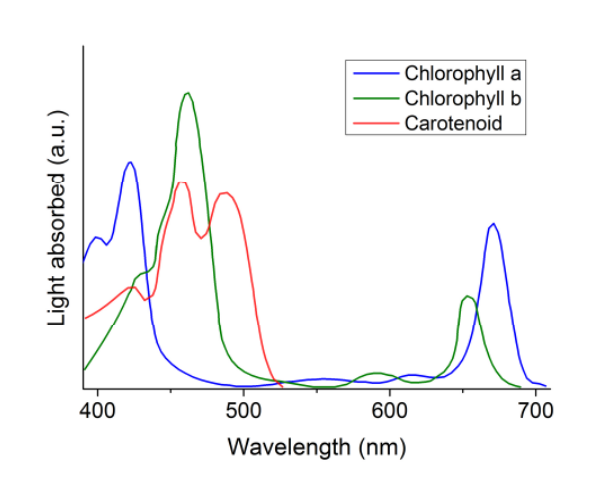How LEDs Are Set to Revolutionize Hi-Tech Greenhouse Farming
It won’t come as a surprise to discover that consumers all over the developed world are increasingly demanding seasonal vegetables all year round, even when the local climate simply doesn’t allow that kind of growth. Particularly sought-after are tomatoes, cucumbers, and leaf vegetables. Which is why greenhouse farming has become a major factor in the food supply of the developed world.

Consequently, the number of commercial greenhouses and the area they occupy is rocketing. In the Netherlands, for example, greenhouses occupy around 0.25 percent of the land area of the entire country. And the Netherlands isn’t even the largest producer of greenhouse vegetables in Europe. That position is held by Spain. And the largest producer of greenhouse vegetables in the world is now China.
This kind of farming has a significant impact on the environment. Commercial greenhouses have to be lit and heated in a way that optimizes growth. And up to 35 percent of the cost of greenhouse tomatoes comes from this heating and lighting.
So an important question is how to minimize the energy it takes to grow these crops. One obvious answer is to convert greenhouses from the traditional incandescent lighting, usually high pressure sodium lamps, to more energy-efficient LEDs.
That might seem like an economic no-brainer but the industry has been slow to make this change because of the high initial cost of LEDs. The question that farmers have pondered over is whether they will ever recoup the upfront cost of a brand-new system of lighting.
Today, they get an answer thanks to the work of Devesh Singh and pals at the Hannover Centre for Optical Technologies at the University of Hannover in Germany. These guys have compared the life-cycle costs of traditional high pressure sodium lamps against those of LEDs for greenhouse lighting.
And they say the advantages are clear. They calculate that the cumulative cost of high pressure sodium lamps surpasses that of LEDs after just seven years and that after 16 years the cumulative cost of high pressure sodium lamps is more than double the equivalent cost of LEDs.
It’s not hard to see where this saving comes from. Although high pressure sodium lamps are individually cheaper than LEDs, they have to be changed every year compared to every 19 years for LEDs. And, of course, LEDs use considerably less electricity, wasting little as heat.
But the most interesting part of Singh and co’s analysis is in the potential of LEDs to change the way that vegetables are grown. High pressure sodium lamps emit light across the entire visible part of the spectrum and well into the infrared where much energy is lost as heat. By contrast, LEDs can be adjusted to emit light in very specific parts of the spectrum.
Plant physiologists have long known that chlorophyll absorbs mainly in the blue, green and red parts of the spectrum but absorbs a little in the orange and yellow. So it makes sense to produce light only in these parts of the spectrum. That’s easy with LEDs, of course, but impossible with sodium lamps
At the same time, various researchers have shown that flowering and germination patterns are influenced by green light and that light frequency also influences the biomass of certain plants as well as their nutritional content.
For example, higher levels of red light increases tomato yield and the vitamin C content of mustard, spinach, and green onions. “Green light also contributes to the plant growth and development,” say Singh and co.
Exactly how light of various frequencies influences plant growth, biomass and nutritional content is not well understood. Which is why plant scientists all over the world are currently studying this phenomenon in an effort to exploit it in future.
For the moment, the strategy for greenhouse farmers seems clear: convert to LED lighting as quickly as possible. The investment should pay for itself within a few years and the advantages that should be possible in influencing yields and the quality of output should begin to become clear in the next few years.
This is a complex topic with numerous subtleties. There is no shortage of arguments in favor of eating locally grown food because of the lower transport costs. Greenhouses allow for a wider variety of fruit and vegetable for a given climate. LEDs give farmers greater flexibility at a lower cost and a smaller environmental footprint. These are surely goals worth aiming for.
Ref: arxiv.org/abs/1406.3016 : LEDs for Energy Efficient Greenhouse Lighting
Keep Reading
Most Popular
Large language models can do jaw-dropping things. But nobody knows exactly why.
And that's a problem. Figuring it out is one of the biggest scientific puzzles of our time and a crucial step towards controlling more powerful future models.
How scientists traced a mysterious covid case back to six toilets
When wastewater surveillance turns into a hunt for a single infected individual, the ethics get tricky.
The problem with plug-in hybrids? Their drivers.
Plug-in hybrids are often sold as a transition to EVs, but new data from Europe shows we’re still underestimating the emissions they produce.
Stay connected
Get the latest updates from
MIT Technology Review
Discover special offers, top stories, upcoming events, and more.